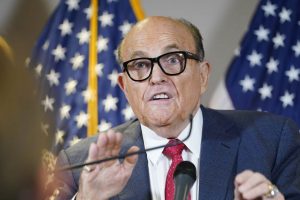Chicago teachers have rejected efforts to reopen the nation’s third-largest school system.
According to the Chicago Sun-Times, the Chicago Teachers Union announced Sunday that its members will work from home rather than resume teaching in person, citing health and safety issues.
“There’s no doubt we all want to return to in-person instruction. The issue is CPS’ current unpreparedness for a return to in-person instruction, and the clear and present danger that poses to the health of our families and school communities,” a union statement read, according to WLS-TV.
The Chicago Sun-Times reported that prior to the vote, Chicago Public Schools Chief Janice Jackson said a refusal to return to the classroom would be equated with a strike.
However, after teachers turned their thumbs down to re-entering classrooms, the Sun-Times reported that Jackson sent an email to parents indicating the timetable for returning to in-person learning would be pushed back to Wednesday.
TRENDING: Why wait for 2024?
Mayor Lori Lightfoot held out hope that teachers might return in a Sunday interview, according to the Chicago Tribune.
“What I know is that we’re still at the table, we’re still bargaining, we’ve narrowed the range of issues and it’s certainly my hope that we will get a deal done,” Lightfoot said.
The Tribune reported that union leaders said there was no agreement struck between the teachers union and the district regarding a return date.
“So what does this mean? It means the overwhelming majority of you have chosen safety,” the union told its members as it notified them of the vote results, in which 71 percent of those participating agreed not to return to in-person classes yet, according to the Sun-Times.
“CPS did everything possible to divide us by instilling fear through threats of retaliation, but you still chose unity, solidarity and to collectively act as one.”
Chicago initiated an attempt the first week of January to phase in a return to classrooms, which began with children in preschool and special education programs. But the Tribune reported that only about 19 percent of the overall pool of eligible students ever showed up.
That has led K-8 teachers, who were originally supposed to return to schools Monday prior to the resumption of in-person classes next week, to push back and say they are not needed because students are not attending.
There are about 70,000 K-8 students the district says it wants to return to schools next week. There is no immediate plan to have high school students return to classrooms.
“CPS wants to present to parents that in-person learning right now — before vaccination and with high community spread of COVID-19 — can look like it did before the pandemic,” a Sunday post on the union website read.
“The district is demanding that 80 percent of educators need to return for less than 20 percent of students.”
#chicago public school students need #edchoice #educationchoice like yesterday. Teachers with zero accountability to parents and students are the reason CPS is a national laughingstock and scandal. Who will stand up for these poor kids? You’d think the left! https://t.co/vYKOrGMCSB
— David S. D’Amato (@dsdamato) January 25, 2021
Struggling kids, fed-up parents: Chicago families who want CPS schools open say they’re being drowned out by ongoing teachers union pushback https://t.co/Vfr4GdaoIN
— namratha kandula (@NammiKan) January 25, 2021
Safety from the possibility of coronavirus infection remains one of the major issues between teachers and the city.
According to the Tribune, officials said that $44 million was invested in providing disinfectants, air purifiers, personal protective equipment and other precautions to public schools to ensure health safety upon return.
However, the Sun-Times reported that the union said teachers will not abandon remote learning until Chicago’s test positivity rate falls below 3 percent, or the average of daily cases over a week falls below 400.
According to the Sun-Times, Chicago’s current positivity rate is at 7.2 percent. It has an average of 629 confirmed cases per day — both rates at the lowest amount since October.
This article appeared originally on The Western Journal.



